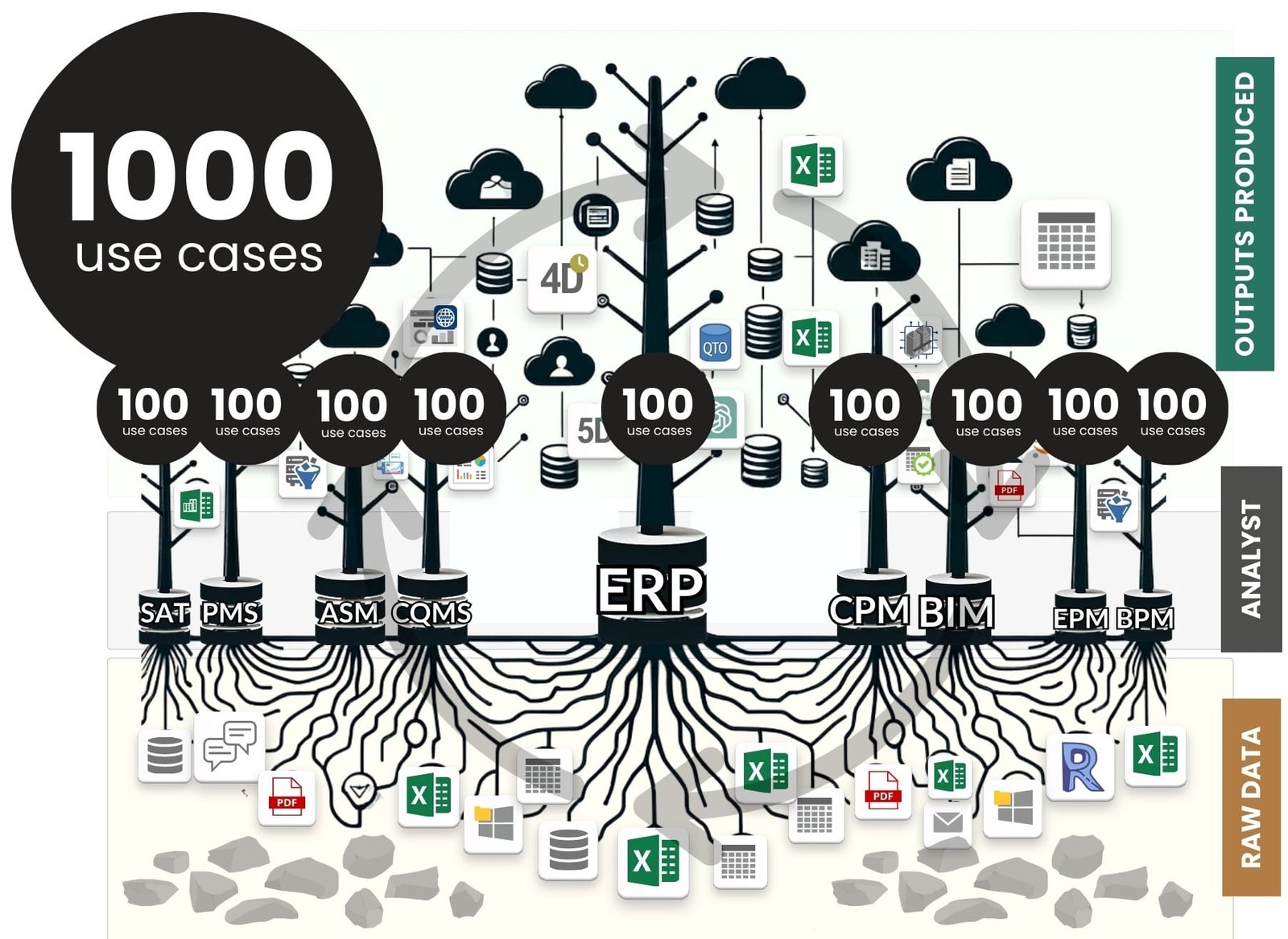The construction industry today faces serious challenges in data and process management. The main challenges are siloed information systems, excessive bureaucracy and a lack of integration between digital tools. These challenges are intensifying as business processes themselves become more complex – driven by technology, changing customer requirements and evolving regulations.
The uniqueness of construction projects is due not only to their technical peculiarities, but also to differences in national standards and regulatory requirements in different countries (Fig. 4.2-10, Fig. 5.1-7). This requires a flexible, individualized approach to each project, which is difficult to implement within traditional modular control systems. Because of the complexity of processes and the large amount of data, many companies turn to vendors offering specialized solutions. But the market is overloaded – many startups offer similar products, focusing on narrow tasks. As a result, a holistic approach to data management is often lost.
Adaptation to the continuous flow of new technologies and market requirements is becoming a critical factor of competitiveness. However, existing proprietary applications and modular systems have low adaptability – any changes often require lengthy and costly revisions by developers who do not always understand the specifics of construction processes.
Companies find themselves hostage to technological lag, waiting for new updates instead of prompt implementation of innovative integrated approaches. As a result, the internal structure of construction organizations is often a complex ecosystem of interconnected hierarchical, and often closed, systems coordinated through a multi-level network of managers (Fig. 2.1-10).

According to a study conducted by the Canadian Construction Association and KPMG Canada 2021 (The Canadian Construction Association and KPMG in Canada, 2021, “Construction in a digital world,” 1 May 2021), only 25% of companies believe they are in a significant or different position compared to competitors in terms of technology adoption or digital solutions. Only 23% of respondents reported that their solutions are significantly or heavily data-driven. At the same time, the majority of survey respondents characterized their use of a number of other technologies as purely experimental or admitted to not using them at all.
This reluctance to participate in technological experiments is especially evident in large infrastructure projects, where mistakes can cost millions of dollars. Even the most advanced technologies – digital twins, predictive analytics – often meet resistance not because of their effectiveness, but because of the lack of proven reliability in real projects.
According to the World Economic Forum (WEF) report “Shaping the Future of Construction” (W. E. Forum, “Forum Shaping the Future of Construction – A Landscape in Transformation:,” January 1, 2016), the introduction of new technologies in construction faces not only technical difficulties but also psychological barriers on the part of customers (W. E. Forum, “Forum Shaping the Future of Construction – A Landscape in Transformation:,” January 1, 2016), the introduction of new technologies in construction faces not only technical difficulties, but also psychological barriers on the part of customers. Many clients fear that the use of advanced solutions will make their projects an experimental site and make them “guinea pigs”, and unpredictable consequences may lead to additional costs and risks.

The construction industry is very diverse: different projects have different requirements, regional peculiarities, legal regulations of classifications (Fig. 4.2-10), calculation standards (Fig. 5.1-7), etc. Therefore, it is practically impossible to create a proprietary universal application or system that would perfectly fit all these requirements and project peculiarities.
Trying to cope with the growing complexity of systems and dependence on software vendors, more and more people are realizing that the key to effective data management is not only openness and standardization, but also simplification of the process architecture itself. The growing complexity and dynamism of business processes requires new approaches, where the priority shifts from accumulating data to structuring and organizing it. It is this shift that will be the next step in the development of the construction industry, marking the end of the era of software vendor dominance and the beginning of the era of meaningful information organization.
The realization of the limitations of one-size-fits-all solutions and vulnerability to increasing complexity is leading to a shift in priorities from closed platforms and data hoarding to transparency, adaptability and structured information handling. This shift in thinking reflects broader changes in the global economy and technology, described through the lens of so-called “industrial revolutions.” To understand where construction is heading and its future direction, it is necessary to consider the industry’s place in the context of the Fourth and Fifth Industrial Revolutions – from automation and digitalization to personalization, open standards and the service-based data model.




















